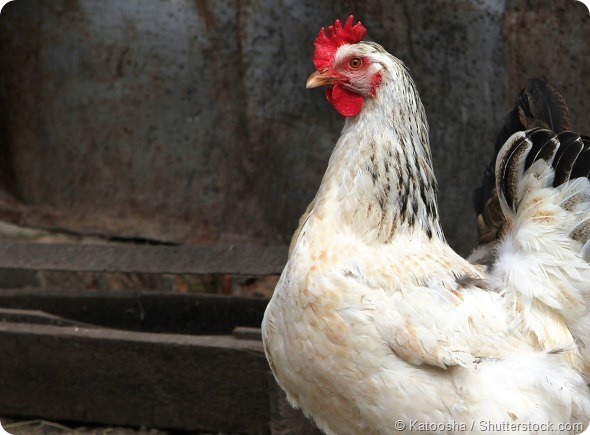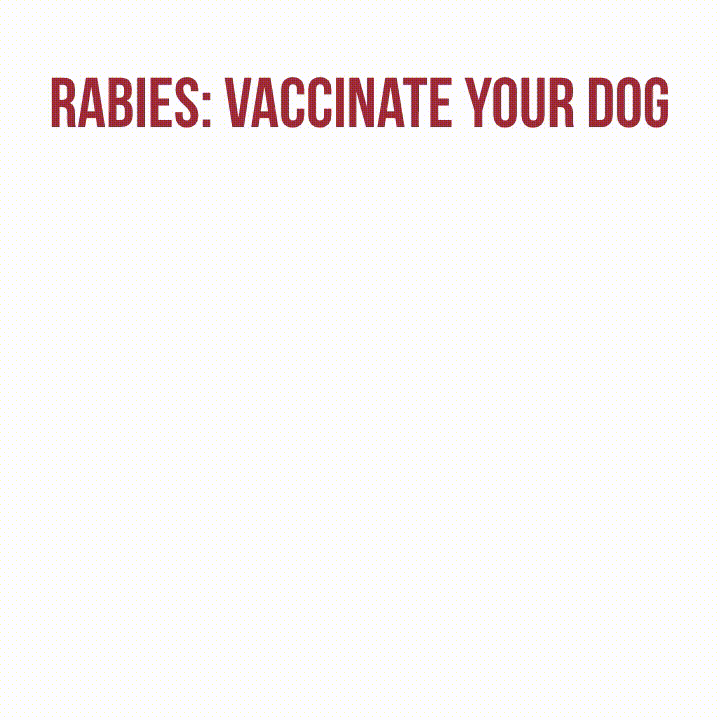What are zoonotic diseases and how common are they?
Zoonotic diseases are diseases or infections which are naturally transmissible from animals to humans, as defined in the OIE Terrestrial Animal Health Code.
It has been shown, that around 60% of the 1400 pathogens for humans were of animal origin, and that 75% of emerging animal diseases were transmissible to humans.
In a modern and globalized world, the risk of spread of zoonoses is increased. Avian flu, rabies, West-Nile fever are some of the well-known one that we can give as examples.

What are the key zoonotic diseases of popular pets such as cats and dogs?
Rabies, cat scratch disease, leptospirosis, ringworm, roundworm are the most common diseases which can be transmitted by dogs and cats to humans.
With regards to rabies, which is present on all continents except the Antarctic, over 95% of human cases are due to dog bites. Regarded as one of the most important zoonoses in the world, this disease that affects all warm-blooded animals and still kills each year tens of thousands of people worldwide, mostly children in developing countries.
It is not to forget, that other animals, such as livestock or wild animals can also serve as reservoirs for many zoonotic diseases.
Vaccinate your dog! Protect yourself!
By what interactions can zoonotic diseases be passed from pets to people?
There are numerous ways zoonotic diseases can be transmitted from animals to humans. And it is important to note that many animals infected with a zoonotic disease may not show clinical signs and that one does not need to touch an infected animal to become infected.
The different transmission modes include:
- Direct contact: when a person is bitten or scratched by an infected animal. Dog bites are responsible for 95% human rabies cases. Direct contact with an animal’s contaminated body (fur, feathers, scales …) is another transmission mode for dermatologic diseases, such as ringworms.
- Indirect contact: when a person comes in contact with cross-contaminated food or with a contaminated animal’s environment or habitat (air, faeces): Toxoplasmosis can be transmitted through infected faeces.
- Vector-borne: when a person is bitten by an infected vector (ticks, mosquitoes, lice, fleas or other disease carrying insects): West Nile Fever, for instance, can be transmitted through mosquitoes from an infected bird to other birds, other animal species or humans.
Zoonotic diseases originating in livestock can also be transmitted through the consumption of animal products (meat, milk, eggs). They are named food-borne diseases. It is the case for salmonellas for example.

How can we protect ourselves from zoonotic diseases?
Reducing public health risks from zoonoses and other health threats at the human-animal-ecosystems involves several aspects, and requires communication and collaboration among the sectors responsible for human health, animal health, and the environment. The interrelation that exits between human and animal health has led to the definition of the ‘one health’ concept.
The fight against zoonoses should start by eliminating the pathogen at its animal source: this is always the most efficient and most cost-effective solution.

This fact provides Veterinary Services, veterinarians, farmers, managers of wildlife and the OIE, with a leading role at both national and international level to prevent and control these diseases. If we once more take the example of rabies, raising awareness among populations on the risks pertaining to rabies transmission is crucial.
At a larger scale, collaboration between public health, human medicine, ecology, and veterinary medicine is necessary for effective detection, control, and prevention of public health threats, at national, regional and global levels.
The OIE is strongly committed in bringing its expertise in the international control of zoonoses such as avian influenza and rabies. The Organization plays a key role through its activities, which notably encompass:
- A world animal health information system for transparency on the global sanitary situation:
- A global network of experts, for the diagnosis of OIE listed-diseases;
Strengthening of Veterinary Services in terms of surveillance, early detection, warning and response, improved diagnostic capabilities and other resources as well as the adoption of new legislations giving appropriate capacities to Veterinary Administrations and their partners will provide the basis for better prevention of zoonoses.
Can diseases also be passed from people to pets?
Yes, some diseases can also be transmitted from people to pets, or other animals, including livestock and wildlife. These are usually referred to as ‘reverse zoonoses’ or ‘zooanthroponoses’.
As an example, according to several studies, Mycobacterium tuberculosis, the causative agent for tuberculosis has proved to be transmissible from humans to cattle and is also thought to be transmissible from humans to dogs . Once carried by an animal it can potentially be retransmitted to humans.
Pigs infected with taenia solium after ingesting human faeces are another example.
What can be done to avoid this transmission?
Whether addressing the transmission risks which exist from animals to humans or from humans to animals, the best prevention means is to maintain good biosecurity measures, aimed at hindering the introduction and dissemination of infectious agents of all kinds.
These recommendations are as valid in respect to the breeding of animals for human consumption, as for pets, and therefore include good hygiene precautions (housing, animal feed, contact with other domestic or wild animals …), appropriate use of treatments (following the veterinarian’s prescription and using vaccination when needed), good surveillance of diseases favoring their early detection and also key to undermine transmission risks. Veterinarians can provide pet owners with more detailed and personalized information.
How can people gain further knowledge about zoonotic diseases?
At the international level, a large range of information is available on the OIE website: www.oie.int. At regional and national level, information should regularly be made available on the webpages of the Ministry of Agriculture, the Ministry of Livestock, or of Veterinary associations.
Veterinarians and physicians also constitute privileged contacts to answer questions related to these topics.
What do you think needs to be done to promote prevention of zoonotic diseases?
First of all it is essential to have in mind that a key component to successful disease prevention programs is ensuring that people at-risk are aware of these threats and receive accurate and timely advice on their reduction.
- Many people ignore the health risks pertaining to zoonosis transmission and therefore do not protect themselves in an appropriate manner.
- At national level, governments sometimes underestimate the heavy consequences generated by zoonoses, and do not allocate sufficient investment to their efficient prevention and control.
The OIE, through its World Animal Health and Welfare Fund supports numerous activities aimed at raising awareness on specific issues, such as the importance of responsible dog ownership in the case of rabies prevention. The Organization develops a wide range of educational material (posters, information sheets on diseases, questions and answers, …) which is freely accessible to countries to deploy their communication campaigns.
The OIE also regularly trains national focal points on communication aspects. These activities are designed to reinforce capacities among national Veterinary Services, notably for the implementation of effective communications campaigns.
Moreover, World Conferences as well as regional meetings are organized by the OIE on a regular basis, so as to facilitate the sharing of best practices among Veterinary Services in the world.
Eventually, in collaboration with its partners from the human and the environmental sectors, namely, the World health Organization (WHO) and the Food and Agriculture organization of the United Nations (FAO), the OIE calls for investing in diseases such as rabies: Investment is needed to involve communities and strengthen local communications initiatives which are crucial for the successful implementation of prevention and control programs, (i.e. dog-vaccination campaigns in areas at-risk for rabies).
Where can readers find more information?
A wide range of information is available on the OIE website: www.oie.int
The OIE also provide information on several diseases, particularly on those who can be a threat to public health. Disease information summaries, as well as questions and answers can be accessed here.
Furthermore, numerous communication tools are available on its various disease portals, and dedicated to the general public as well as to more specialized audiences. The Rabies portal and the One health portal are some examples.
About Dr Monique Éloit, OIE Director General
© OIE/I. Zezima

Dr Monique Éloit is the 7th Director General of the World Organization for Animal Health (OIE). She began her five-year term of office on 1 January 2016, after having served as Deputy Director General of the OIE for seven years. More information
The World Organization for Animal Health (OIE) is an intergovernmental organization with a mandate from its 180 Member Countries to improve animal health and welfare worldwide. According to the World Trade Organization, the OIE is the reference standard-setting international organization. It is responsible for ensuring transparency of the animal disease situation worldwide, including diseases transmissible to humans, for the publication of disease prevention and control methods as well as for safeguarding the sanitary safety of world trade in animals and animal products, and ensuring food safety from their production phase.
The OIE works with the permanent support of 311 Reference Laboratories and Collaborating Centers and 12 Regional and Sub-regional Offices worldwide.